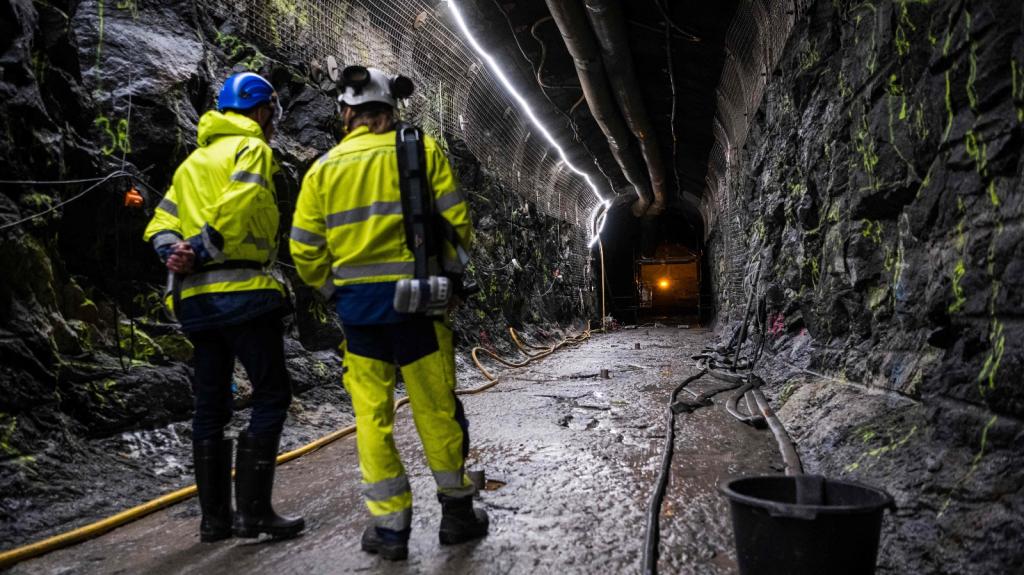For all the misery it has caused, the global food-price crisis has at least forced people to think more seriously about food production.
I can think of few things more taken for granted in modern post-industrial society than fertilizer. Few people know people know what fertilizes the fields that produce the food they eat — fewer, I’d bet, than know the source of their drinking water or electricity. To modern consumers, all of these things appear as if by magic.
But with food prices hovering at elevated levels and hunger protests simmering in the global south, stuff like fertilizer is suddenly front-page news. The Wall Street Journal uncorked a doozy the other day. Did you know that dominant fertilizer giants like Mosaic and Potash Corp. of Saskatchewan — the ones I’m always writing about — are organized into OPEC-style cartels and legally allowed to collude on price? I didn’t.
Prices have rocketed for all the major inputs of industrial farming, the Journal reports, but fertilizer takes the cake.
In April, farmers paid 65 percent more for fertilizer than they did a year earlier, according to the U.S. Department of Agriculture. That compares with price increases of 43 percent for fuel, 30 percent for seeds and 3.8 percent for chemicals such as weedkillers and insecticides over the same period …
As a result, farmers and fertilizer-importing nations are furious and beginning to look at the structure of fertilizer markets. What they’ve found is jaw-dropping.
In several countries, obscure laws shield makers of potash and phosphate from certain antitrust rules. In the U.S., for example, phosphate makers are among a handful of industries empowered by the 1918 Webb-Pomerene Act to talk with competitors about pricing and other issues.
It gets weirder.
In the U.S., Potash Corp. and Mosaic are the sole surviving members of a phosphate export cartel called the Phosphate Chemicals Association. Under a 90-year-old law designed to promote American exports, the companies are allowed to legally market and sell their product overseas as a single entity at a price set in consultation with one another. Similarly, Canada has Canpotex, and Russia has Belarus Potash Co., another export cartel.
So a Canadian and a Russian cartel dominate the global potash market, and a U.S. cartel controls phosphorous. These groups have a literally dominant grip on the world’s serving spoon — at least the vast swath of the earth that relies on industrial-scale agriculture for sustenance. And they’re using their market power to jack up prices and reap enormous profits.
Helped by soaring potash prices, Potash Corp. of Saskatchewan Inc., one of the companies that make up Canpotex along with Minnesota-based Mosaic Co. and a smaller Canadian producer called Agrium Inc., posted first-quarter net income of $566 million, or $1.74 a diluted share, nearly triple the year-earlier figure. The company’s stock has risen nearly eightfold to around $200 from about $25 three years ago. Mosaic’s latest quarterly earnings came in at $520.8 million, up more than 10-fold from a year earlier.
No wonder a Wall Street analyst recently called Potash Corp. of Saskatchewan the “Saudi Arabia of Fertilizer.” Actually, Saudi princes might look with envy on a Potash exec. According to the analyst:
Potash Corp. owns 22 percent of the world’s potash production capacity, while Saudi Arabia accounts for roughly 13 percent of global oil production. … The Middle East has more than 60 percent of the world’s proven oil reserves, while Canada sits on about 57 percent of the world’s potash reserve base.
It’s jarring to reread those lines, now that I know that Canada’s few potash producers are literally organized into a cartel.
Of course, the producers themselves — sounding much like their Saudi counterparts — say there’s nothing to worry about: Just keep handing over the big bucks, and we’ll supply the fertilizer. Here’s the Journal again:
Potash Corp. said it can raise production to 15.7 million tons by 2015 from its current capacity of 10.2 million tons by improving the operation of its existing mines. Opening a new potash mine can cost more than $2.5 billion and take about seven years, the company said. “Developing new production takes a long time, a lot of money, and an expertise that few possess,” Potash Corp.’s Mr. Doyle recently told investors.
As for phosphorous, an exec at Mosaic — the dominant phosphorous producer, two-thirds owned by agribusiness giant Cargill — says everyone should calm down:
Mosaic … said it plans to “de-bottleneck” some of its Florida phosphate mines to boost supply.
Awesome. He forgot to add, though, that phosphate mining is environmentally ruinous. Among its depredations, it leaves behind radioactive waste that no one knows what to do with.
So industrial agricultures relies on three macronutrients: N, P, and K. Two are controlled by cartels, the third (nitrogen) is derived from natural gas. I ask yet again: Might there be other, less-dodgy ways to “feed the world”?


